Tracey Watts from the Third Wave Group yesterday alerted me to a research paper by Gavin Putland from the Land Values Research Group that examines the relationship between recessions and property prices in 41 countries worldwide. It offers the following key findings:
- A downturn in the property market, especially in turnover (sales) of properties, is a leading indicator of recession, with a lead time of up to 9 quarters for turnover, or up to 8 quarters for values. Of all the countries in which a conspicuous fall in turnover was documented, there was no case in which the onset of recession preceded the fall in turnover…
- In the property market, a fall in turnover is a leading indicator of a fall in prices, and the lead time is usually one to two quarters. In no case is there persuasive evidence of the fall in prices coming first…
- Recessions are mostly home-grown… in most countries the recession was preceded by a downturn in the domestic property market.
Since Putland only examines the house price falls and recessions associated with the Global Financial Crisis, his sample is not large and varied enough to draw definitive conclusions. Each of the busts in his sample transpired within the context of a global credit crunch so, in my view, for two reasons the evidence is not conclusive enough to state that that most recessions are home grown. First, using only one business cycle, where financial conditions were identical across all nations is an overly homogeneous sample. Two, the denouncement of that cycle was a GLOBAL credit crunch.
Nonetheless, Putland’s findings are interesting and do throw light on the trajectory of Australian growth, its risks and interest rates. Today I’m going to revisit the trajectory of transaction volumes and home prices in Australia to gauge the depth of trouble that is brewing on the home front.
Below are charts showing changes in house prices and transaction volumes. My data sources for this exercise are as follows:
- Australian Bureau of Statistics (ABS) established house price indices.
- ABS Established House Transfers.
- Australian Property Monitors (APM) Home Sales.
For each mainland capital city and nationally, two charts are presented: one showing quarterly changes in house prices and transaction volumes since 2002 (derived from ABS data); and one showing annual changes since 1992, whereby house trasnsactions have been derived from both Australian Property Monitors (APM) and the ABS and weighted by population.
Australia:
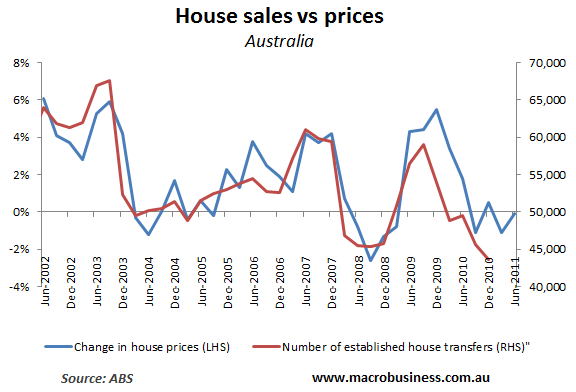
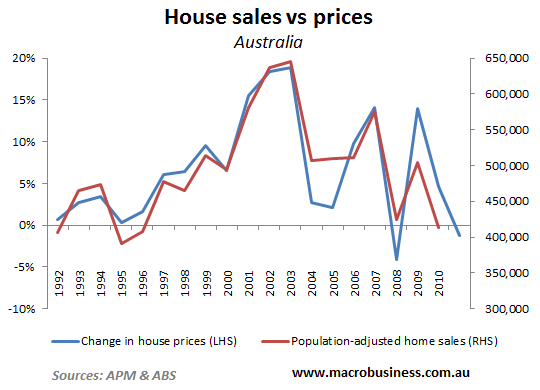
Sydney:
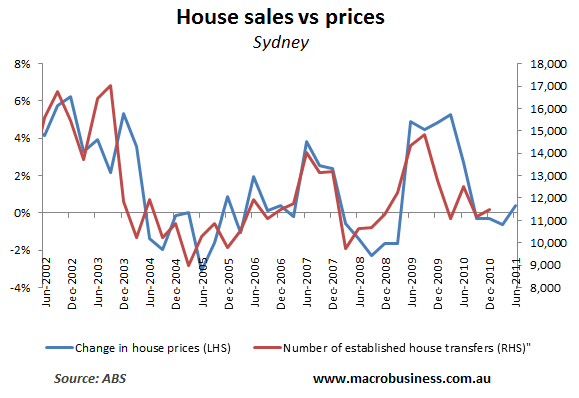
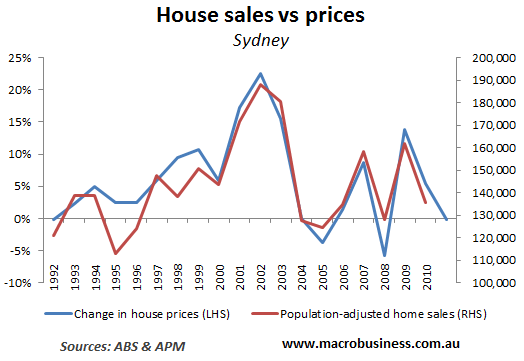
Melbourne:
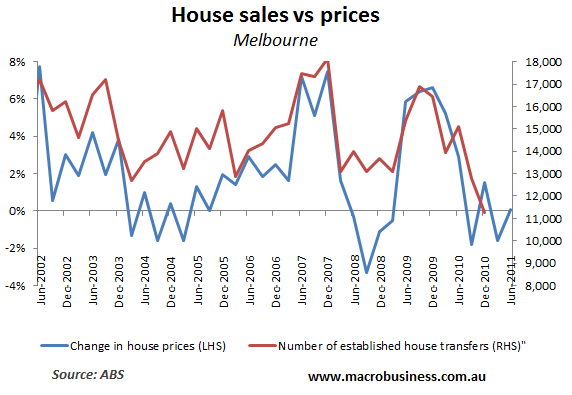
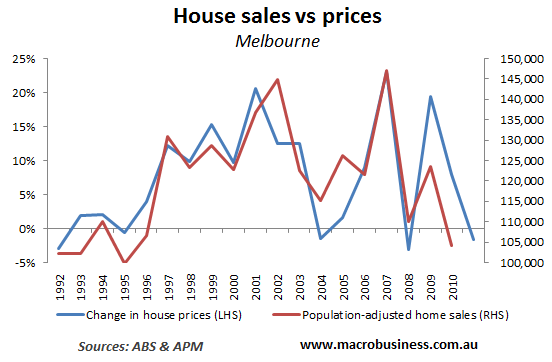
Brisbane:
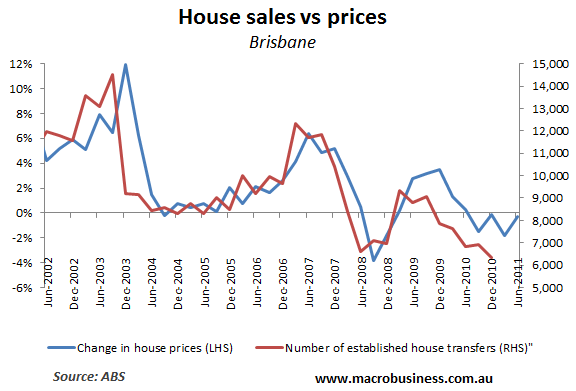
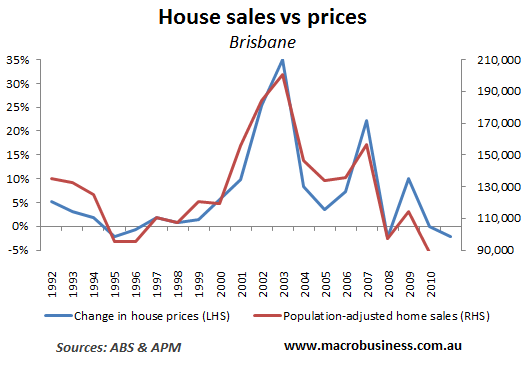
Perth:
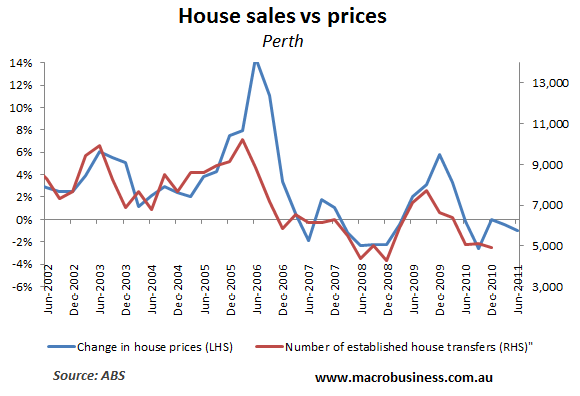
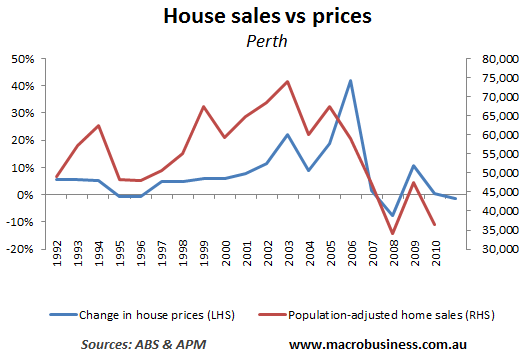
Adelaide:
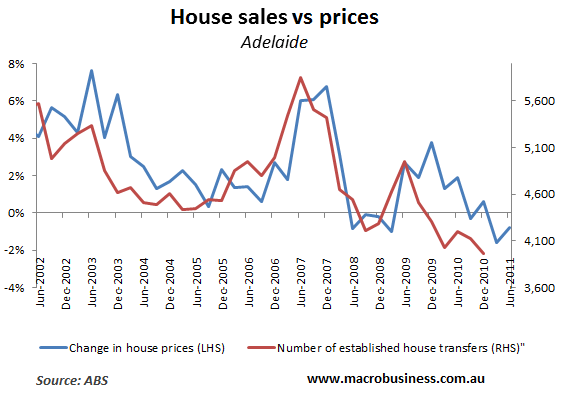
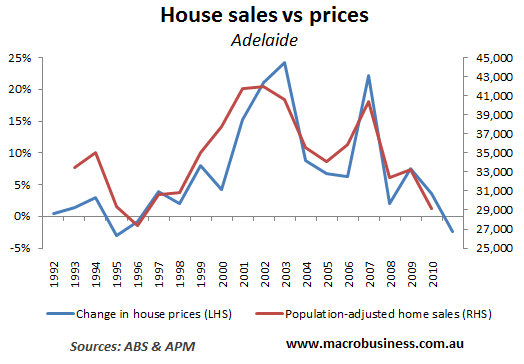
As you can see, the data shows a strong correlation between changes in house transactions (sales) and changes in house prices, with the quarterly ABS data confirming that the number of house sales lead prices.
Unfortunately, the ABS house transfers data lags the house price series by 6 months, rendering it useless as a predictive indicator for both house prices and the economy.
However, RP Data does provide sales data periodically, and the picture is not pretty – the level of home sales nationally is at its lowest level since 1996 and around 16% below the five year average (see below chart).
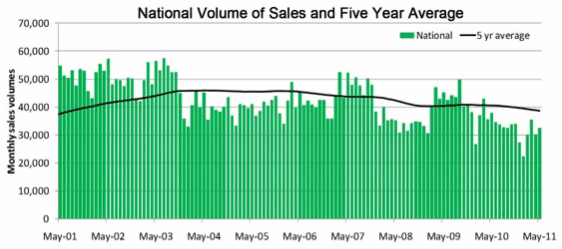
Moreover, RP Data shows a ballooning of listings nationally:
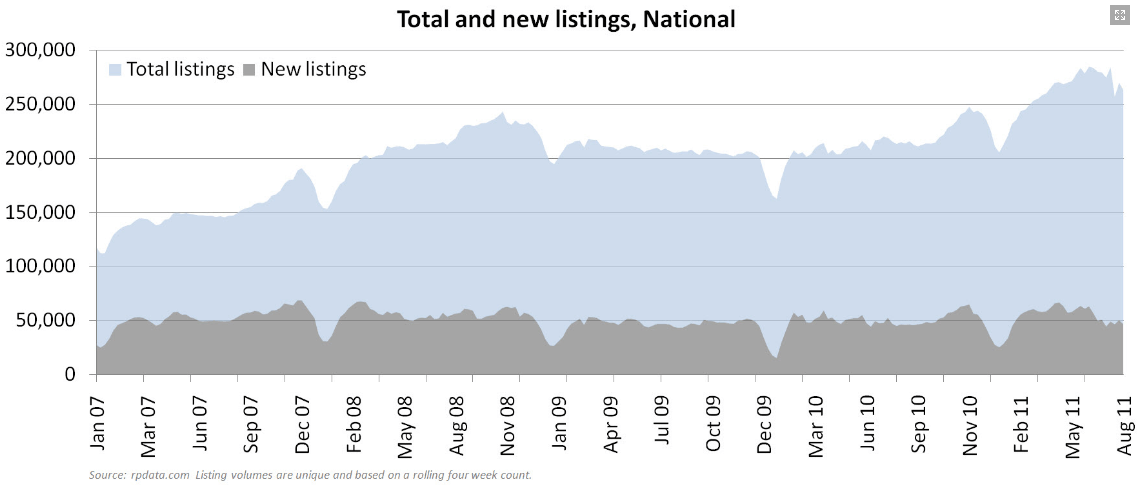
Given Putland’s finding that turnover (sales) of properties is a leading indicator of recession, and the fact that home sales have contracted sharply across the nation, what evidence is there that a home grown recession is coming to Australia?
Certainly, consumer confidence has been sliding all year:
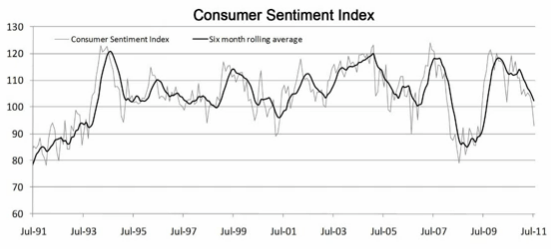
And, given the growing correlation between house prices and consumer confidence, that doesn’t seem likely to change:
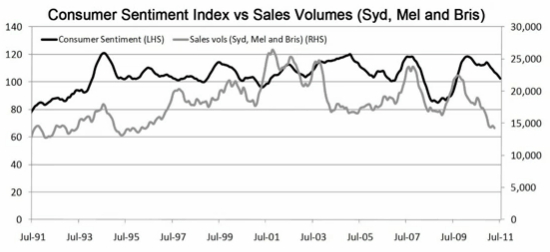
Even though interest rates haven’t budged since November 2010, retail sales growth has stalled and there are now growing signs of a turn in the labour market with recent reports by the ABS, Roy Morgan and Melbourne Institute all suggesting growing weakness in both hiring and wages growth.
Yesterday’s profit result by Westpac might provide a glimpse into our future. Australia’s second largest home lender announced a round of job redundancies as part of efforts to reduce costs in the face of a slowing economy and subdued borrowing by households. Also, with austerity hitting many Australian service sectors, Australia’s governments are also likely to be adversely impacted by lower stamp duties, company and personal income taxes, which could lead to redundancies and/or lower employment growth within the public service as well.
As MB has also documented at length, Australia has a large growth offset in its mining investment boom so broader conditions are very different to those outlined by Putland’s research. Equally, however, Putland’s contention that falling house prices are a leading indicator of recession appears about to undergo another test.

